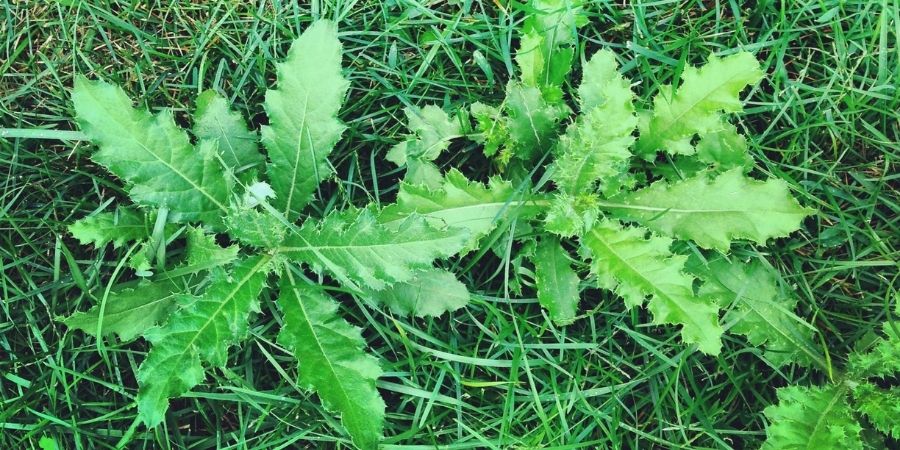Managing Jumping Worms in Your Lawn
- horticulturist and gardening expertMarch 7, 2020
Whether you call them jumping worms, crazy worms, Alabama jumpers or snake worms, they are bad news for our gardens and natural spaces. These invasive worms live near the soil surface devouring leaf litter and the organic matter that plants depend upon. Their feeding changes the soil structure and chemistry so the soil is more subject to erosion, inhibits tree seedling establishment, damages the relationship between soil fungi and trees and reduces the soils ability to absorb water.
The earthworm gardeners appreciate for the aeration they provide are another non- native species wreaking havoc in our woodlands. Although a threat, the European earthworms devour organic matter and spread at a much slower rate than the jumping worms. Most earthworm species move 30 feet a year while jumping worms can infest as much as 17 acres in one season.
Jumping worms (Amynthas spp) most likely arrived in North America in the late 19th century on imported plants, and other horticulture and agriculture materials. They can now be found in much of the northeast, southeast, Midwest and recently upper Midwestern United States.

Photo Credit: UW-Madison Arboretum
Why Should You Care about Jumping Worms?
These worms in your lawn change the soil structure in gardens as well as our natural spaces. Jumping worms turn rich organic soil into small crumbles that resemble coffee grounds. This depletes nutrients, disturbs the soil fungi and decreases the water-holding ability of soils. All this impacts the health and productivity of our garden plants. And as their populations grow you may need to change some of the plantings and maintenance practices in your landscape.
What Do Jumping Worms Look Like?
Jumping worms live near the soil surface. They are dark brown, smooth and shiny growing to 6 inches or more in length. The fleshy band near the end of the worm, known as clitellum, is cloudy white to gray, encircles the worm and is not raised as it is on earthworms.
They move through the soil like snakes and this along with their violent thrashing when disturbed inspired their common names. These quick-moving worms are hard to capture. Grab one and you just may find its tail in your hand while the rest of the worm returns to the soil.
Individual jumping worms only live for a year but can grow from an egg to adult in 60 days producing several generations in one season. They are parthenogenetic meaning a single worm can reproduce without a mate, further increasing their rate of reproduction. And when they die they leave behind tiny tough black cocoons the size of a mustard seed to overwinter in the soil.
How to Stop the Spread of Jumping Worms
Although jumping worms are large in size, their tiny cocoons can easily go undetected. Adults and cocoons can spread in mulch, soil and plants. The tiny cocoons can move unseen on shoes, tools and equipment.
There are currently no chemical controls or methods to eliminate them from your property. Prevention is the first step in limiting worms spreading in your lawn. Here are a few precautions you can take to help stop the spread of these voracious worms:
- Only purchase and use compost and mulch managed to reduce the risk of spreading these invaders and other pathogens. Research indicates the cocoons can be killed in 104 degree temperatures. Actively composted plant material and heat-treated mulch is less likely to contain these pests.
- Don’t share plants as you may unintentionally be sharing jumping worms. Although the worms may be easy to see, the cocoon is not. And the last thing you want to do is share these invaders with your gardening friends.
- Don’t move plants from a jumping worm-infested garden to another area. Limiting their spread can help you maintain soil and plant health in non-infested areas.
- Purchase plants from reliable sources and examine plants for signs of these unwelcome pests.
- Clean soil and debris from tools and clothing each time you move from one garden bed to the next. I used one set of tools and pair of boots when working in a garden bed where jumping worms were found. Be sure to clean your boots and clothes before visiting other's landscapes.

Photo Credit: UW-Madison Arboretum
What to Do When You Find Worms in Your Garden
Unfortunately, I found jumping worms in one of my gardens. I continually gathered any I found, placed them in a plastic bag and cooked them in the sun. Once dead I disposed of them in the garbage. I sanitized my tools and cleaned my boots after each visit to this garden.
Someone asked how my property became infested. Over the years I have purchased or been given leaf compost for mulch, purchased plants from a variety of sources and received plant divisions from friends. Any or all of these are possible sources of the infestation. And despite my efforts to isolate the problem, I may have inadvertently spread them or they were already present but undetected in other garden beds.
I must admit that I was a bit panic-stricken and devastated by finding them in my garden. But I realize I can’t undo the past but need to continue monitoring and managing my gardens to support plant health in spite of these pests. Here are some action steps we can take once jumping worms are discovered in our gardens:
- Remove and destroy any jumping worms you find. Every adult captured and killed means a lot fewer egg filled cocoons left behind to further infest the garden. I carry a container of rubbing alcohol into the garden. I drop the jumping worms into this container and watch them die. Or you can bag and dispose of them in the trash.
- Water plants thoroughly when needed to encourage deep drought-tolerant roots.
- Try a variety of plants and record those that thrive despite heavy infestations. Share this information with fellow gardeners.
- Leave insect- and disease-free plant debris in the garden to decompose. I leave my stand as late as possible to support the beneficial insects. Then chop and leave on the soil surface to serve as a mulch, decompose and feed the soil.
- Watch for jumping worm updates from your local Extension service, Department of Natural Resources and other reliable sources. Researchers are working hard to find ways to manage these unwelcome pests.
Although jumping worms are a major threat don’t let the fear or their presence overwhelm you and stop you from connecting with nature. Do your part to limit their spread, keep plants healthy and support research.



